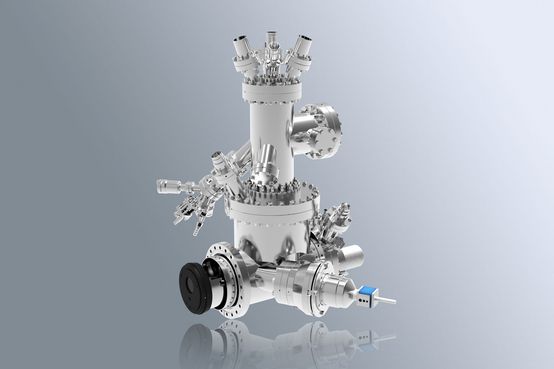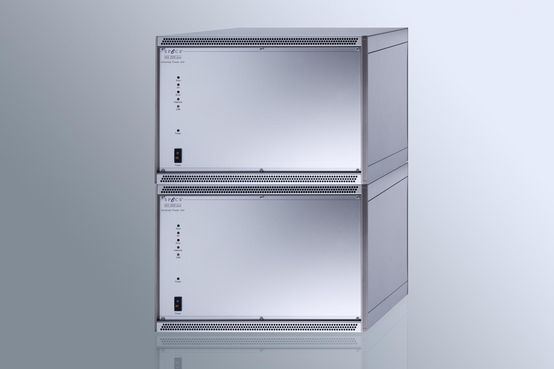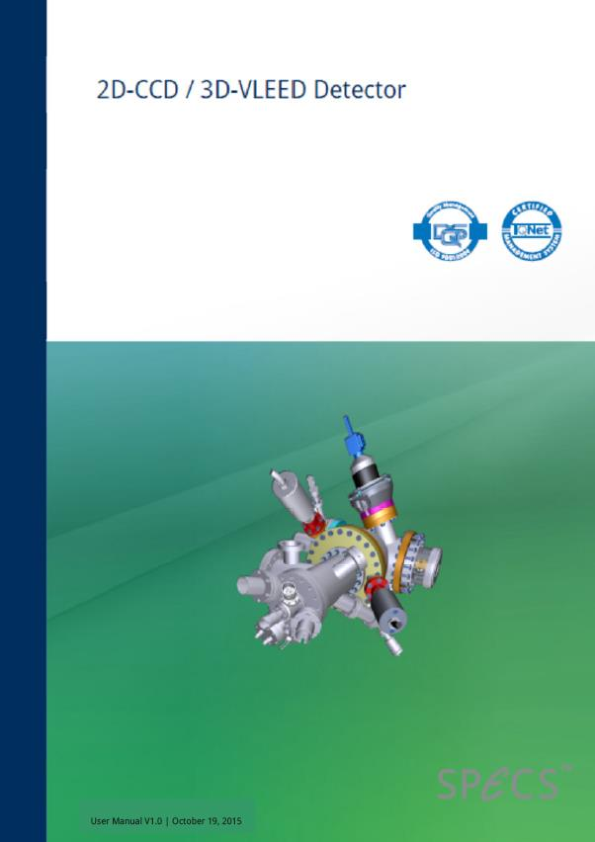 Detail
DetailPHOIBOS 150 with 2D-CMOS and 3D(2D) Spin VLEED Detector
Hemispherical Energy Analyzer with 2D CMOS Detector for XPS, ARPES, ISS and LEISS and VLEED Detector for Spin Measurements with 150 mm Mean Radius
The PHOIBOS 150 hemispherical energy analyzer is the-state-of-the-art analysis solution for photoelectron spectroscopy. This analyzer can be operated in all relevant analysis modes, such as ARPES, XPS, UPS, as well as AES, ISS and LEISS. Its design and the modular supplementary hardware makes this analyzer the most versatile PES analyzer in the market.
The patented design of the detector section allows measurements of all three spin components and subsequent 2D ARPES merasurements. The 2D detector is a full scale 2D CMOS detector un undiminished performance in standard PES. The spin channel consist of a 90° deflector to acess the ut of plan spin component and a special rotator lens to swich between the two in plance components of the spin.
The actual spin detector is the FOCUS Ferrum detector, where an freshly prepared iron oxide film is the spin selective scattering target. With the VLEED detector each spin channel is measured separately with a high efficiency after switching integarted magentic coils for spin selecton. The preparation of the scatering target is fully automated.
The energy analyzer sectionis equipped with 8 customizable entrance and 3 exit slits. For highest energy resolution the entrance slit can be chosen down to 50 µm, providing achievable energy resolution better than 1.8 meV. The analyzer comes with a highly stable power supply, the HSA 3500 plus, for best performance in a wide kinetic energy range.
A classical CCD camera detection system is available on request.
SPECIFICATIONS
| Kinetic Energy Range | 0-3500 eV in PES |
| Pass Energies | 0-550 eV Continously Adjustable |
| Energy Dispersion | Hemisphere |
| Lens Modes | Transmission Mode, Angular Resolved Mode, Magnification (Lateral Resolved) Mode |
| Measurement Modes | Snapshot Mode, Sweeping Mode, Fixed Energy Mode |
| Detector | 2D CMOS Detector |
| Slits/Apertures | 8 entrance and 3 exit slits and iris aperture |
| Energy Window | 13% of Pass Energy |
| Electronics | HSA 3500 + |
| Working Pressure | 10-11 to 10-7 mbar |
| Energy Resolution | < 1.8 meV in UPS |
| Angular Resolution | < 0.1° in ARPES Mode |
| k-Resolution | N/A |
| Acceptance Angle | ±15°, ±7°, ±4° and ±3° in ARPES Mode |
| Smallest Acceptance Spot | 100 µm |
| XPS Count Rates UHV | > 0.5 Mcps @ 0.85 eV and > 1.5 Mcps @ 1.00 eV FWHM |
| Lateral Resolution | < 35 µm |
| Detector Channels | 1285 x 730 (with Channel Binning) |
| Sherman Function /FoM | Sherman Function: 0.28 |
| Working Distance | 40 mm |
| Mounting Flange | DN100CF (6" OD) |
| Magnetic Shielding | Double µ-Metal Shielding |
| Electric Isolation | > 10 keV |
SPARE PARTS

Spare channelplate set for all 40 mm CCD detectors

Spare phosphor screen for all 40 mm CCD detectors. Exchange with channelplates is recommended.






